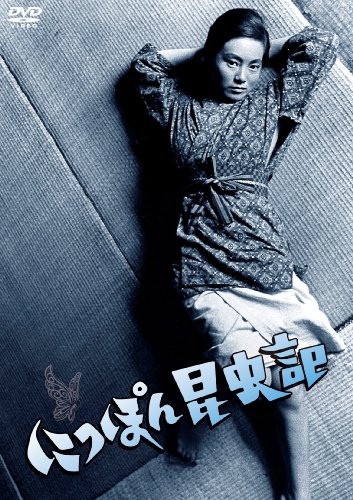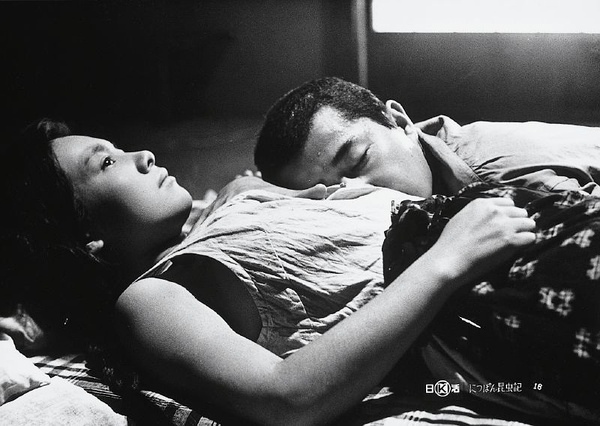1963 日本昆蟲記 The Insect Woman (Nippon konchuki)
該片成功地塑造了一個有可能走出洞穴的人物——女主人公富米,一位下層社會的婦女形象,設定了一個沒有希望,沒有出路的環境,即便賦予了她變革現實的能量和與此相應的智慧,她仍然改變不了其周遭的環境。導演經過長期調查,以他獨到的見解,深刻的觀察力,將生活在最底層的日本民族真正延續下來的過著昆蟲般生活的人,用電影的方式呈現在觀眾面前。本片獲年度旬報十佳獎第一名,並被選入日本名片200部。

描述戰爭前後的農家女松木苦難而悲慘的一生,影片開始寫由於松木的婚姻不幸,而淪為妓女的過程。最後描述她的後半身是為召集女孩賣春而過的,經過種種,她還是朝這個方向前進。當一支昆蟲在心中立定了方向之後,就不改變地朝著目標前進。在本片中有兩個角色就像昆蟲一樣,一個是松木的父親忠次,一個是左幸子飾演的松木。導演今村昌平對出生在東北的松木,除了描寫她的半生外,對女性的性亦作特別的處理。觀眾看到的是露骨而不猥褻的床戲,今村成功地將性非常認真地表現出來。

“My heroines are true to life – just look around you at Japanese women. They are strong, and they outlive men,” director Shôhei Imamura once observed. And so an audacious, anthropological approach to filmmaking came into full maturity with the director’s vast 1963 chronicle of pre- and post-war Japan, The Insect Woman [Nippon-konchûki, or An Account of Japanese Insects].
Comparing his heroine, Tome Matsuki (played by Sachiko Hidari, who won the “Best Actress” award at the 1964 Berlin Film Festival for the role) to the restlessness and survival instincts of worker insects, the film is an unsparing study of working-class female life. Beginning with Tome’s birth in 1918, it follows her through five decades of social change, several improvised careers, and male-inflicted cruelty.

Born in a rural farming village in 1918, Tomé survives decades of Japanese social upheaval, as well as abuse and servitude at the hands of various men. Yet Shohei Imamura, ever the cinematic “entomologist,” refuses to make a victim of her, instead observing Tomé (played by the extraordinary Sachiko Hidari) as a fascinating, pragmatic creature of twentieth-century Japan. A portrait of opportunism and resilience in three generations of women, The Insect Woman is Imamura’s most expansive film, and Tomé his ultimate heroine.


 留言列表
留言列表
